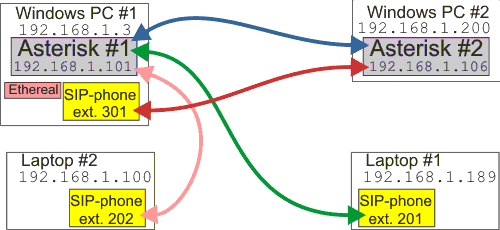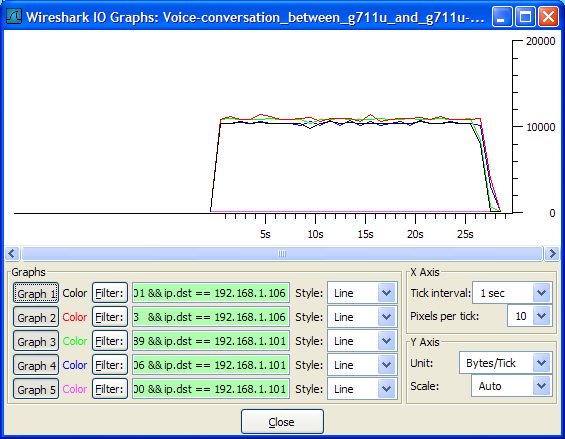Difference between revisions of "Voice only analysis"
From TD-er's Wiki
Jump to navigationJump to search| Line 4: | Line 4: | ||
[[image:schematic_of_PC-config.png|Schematic overview of all PC's running which software.]] | [[image:schematic_of_PC-config.png|Schematic overview of all PC's running which software.]] | ||
| − | |||
| − | |||
| − | |||
| − | |||
| − | |||
| − | |||
| − | |||
== Results == | == Results == | ||
Revision as of 13:05, 23 February 2007
Experimental Setup
Because it is impossible to measure data traffic between two VM ware's on the same machine, the following setup is used.
Results
With WireShark data has been collected and the following filters are used in the in I/O-graph:
Filter-Black: ip.src == 192.168.1.101 && ip.dst == 192.168.1.106 Filter-Red : ip.src == 192.168.1.3 && ip.dst == 192.168.1.106 Filter-Green: ip.src == 192.168.1.189 && ip.dst == 192.168.1.101 Filter-Blue : ip.src == 192.168.1.106 && ip.dst == 192.168.1.101 Filter-Pink : ip.src == 192.168.1.100 && ip.dst == 192.168.1.101
Conclusions
- From the graph shown above there can be concluded that the IAX2 traffic (black and blue line) uses less bandwidth than the SIP-traffic (red and green line). This is due to the IAX trunking which reduced the overhead.
- We also filtered for traffic between all three SIP-telephones and no direct traffic was detected between them.

